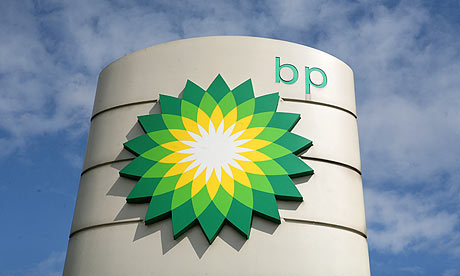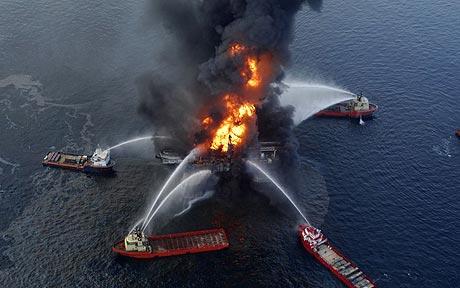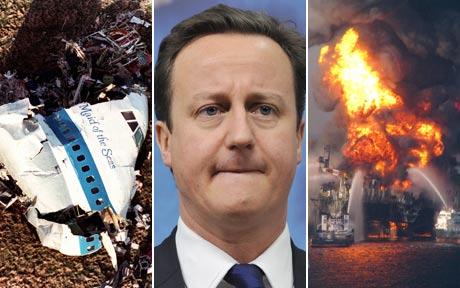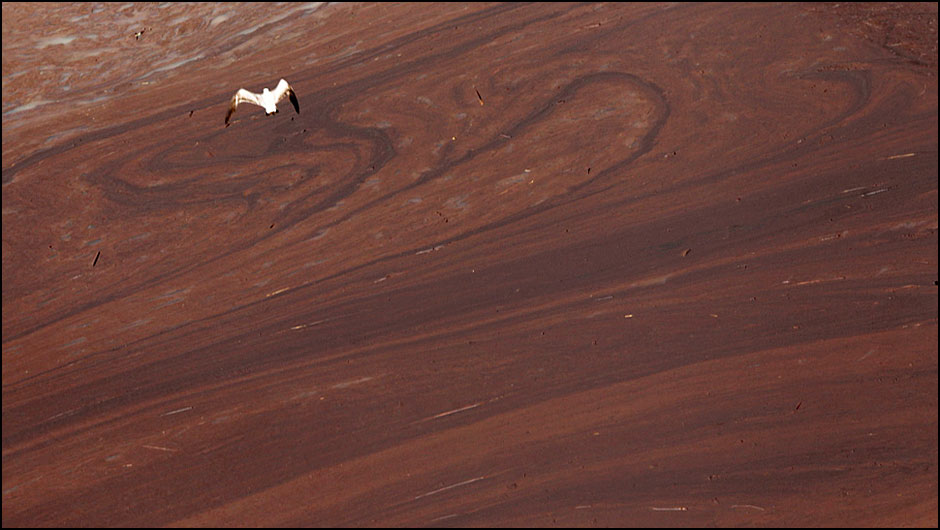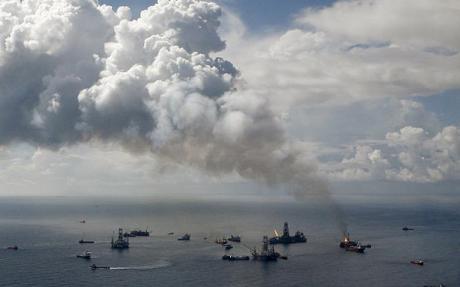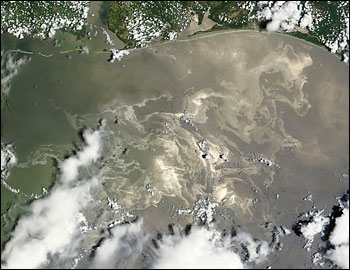EPA Whistleblower Accuses Agency of Covering Up Effects of Dispersant in BP Oil Spill Cleanup
With BP having poured nearly two million gallons of the dispersant known as Corexit into the Gulf of Mexico, many lawmakers and advocacy groups say the Obama administration is not being candid about the lethal effects of dispersants. We speak with Hugh Kaufman, a senior policy analyst at the EPA’s Office of Solid Waste and Emergency Response and a leading critic of the decision to use Corexit. [includes rush transcript]
SHARIF ADBEL KOUDDOUS: The Obama administration has given BP the go-ahead to keep its ruptured well sealed for another day despite worries about the well leaking some oil and methane gas. National Incident Commander Thad Allen said the seep was not cause for alarm. Meanwhile, the Occupational Safety and Health Administration, or OSHA, has released its analysis of BP’s data on the exposure of cleanup workers to the chemical dispersants being used in the Gulf. OSHA chief David Michaels told the environmental website Greenwire that, quote, “I think you can say exposures are low for workers. Exposures of workers on shore are virtually nonexistent. There are significant exposures near the source, and that’s to be expected given the work being done there. Those workers are given respiratory protection,” he said. But with BP having poured nearly two million gallons of the dispersant known as Corexit into the Gulf, many lawmakers and advocacy groups say the Obama administration is not being candid about the lethal effects of dispersants. At a Senate subcommittee hearing last week, Maryland Democrat Barbara Mikulski grilled administrators from the EPA about Corexit and said she didn’t want dispersants to be the Agent Orange of this oil spill.
SEN. BARBARA MIKULSKI: I’m concerned because I feel and I believe, and my reading verifies, that we don’t know enough about the impact of dispersants and dispersed oil on people, marine life and water quality. I’m very concerned. And my question is, should we ban them? Should we take a time out from using them? What are the short- and long-term consequences of using them? I don’t want dispersants to be the Agent Orange of this oil spill. And I want to be assured, in behalf of the American people, that this is OK to use and OK to use in the amounts that we’re talking about.
AMY GOODMAN: Maryland Senator Barbara Mikulski. While concerns over the impact of chemical dispersants continue to grow, Gulf Coast residents are outraged by a recent announcement that the $20 billion government-administered claim fund will subtract money cleanup workers earn by working for the cleanup effort from any future claims. Fund administrator Kenneth Feinberg says the ruling will apply to anyone who participates in the Vessels of Opportunity program, which has employed hundreds of Gulf Coast residents left out of work because of the spill. It’s seen as an effort to limit the number of lawsuits against BP. We’re joined now by two guests on these two issues, on Corexit and the workers. Independent journalist Dahr Jamail is joining us from Tampa, Florida. He’s been reporting from the Gulf Coast for three weeks. His latest article at Truthout is called “BP’s Scheme to Swindle the ‘Small People.'” And from Washington, DC, we’re joined by Hugh Kaufman, a senior policy analyst at the EPA’s Office of Solid Waste and Emergency Response. He’s been a leading critic of the decision to use Corexit. We welcome you both to Democracy Now! Let’s begin with Hugh Kaufman. First of all, explain what Corexit is, the company that makes it, what’s in it, and your concerns.
HUGH KAUFMAN: Well, Corexit is one of a number of dispersants, that are toxic, that are used to atomize the oil and force it down the water column so that it’s invisible to the eye. In this case, these dispersants were used in massive quantities, almost two million gallons so far, to hide the magnitude of the spill and save BP money. And the government-both EPA, NOAA, etc.-have been sock puppets for BP in this cover-up. Now, by hiding the amount of spill, BP is saving hundreds of millions, if not billions, of dollars in fines, and so, from day one, there was tremendous economic incentive to use these dispersants to hide the magnitude of the gusher that’s been going on for almost three months.
Congressman Markey and Nadler, as well as Senator Mikulski, have been heroes in this respect. Congressman Markey made the BP and government put a camera down there to show the public the gusher. And when they did that, experts saw that the amount of material, oil being released, is orders of magnitudes greater than what BP and NOAA and EPA were saying. And the cover-up started to evaporate. But the use of dispersants has not. Consequently, we have people, wildlife-we have dolphins that are hemorrhaging.
People who work near it are hemorrhaging internally. And that’s what dispersants are supposed to do. EPA now is taking the position that they really don’t know how dangerous it is, even though if you read the label, it tells you how dangerous it is. And, for example, in the Exxon Valdez case, people who worked with dispersants, most of them are dead now. The average death age is around fifty. It’s very dangerous, and it’s an economic-it’s an economic protector of BP, not an environmental protector of the public.
Now, the one thing that I did want to mention to you, Amy, that’s occurred in most investigations, back even in the Watergate days, people said, “follow the money.” And that’s correct. In this case, you’ve got to follow the money. Who saves money by using these toxic dispersants? Well, it’s BP. But then the next question-I’ve only seen one article that describes it-who owns BP? And I think when you look and see who owns BP, you find that it’s the majority ownership, a billion shares, is a company called BlackRock that was created, owned and run by a gentleman named Larry Fink. And Vanity Fair just did recently an article about Mr. Fink and his connections with Mr. Geithner, Mr. Summers and others in the administration. So I think what’s needed, we now know that there’s a cover-up. Dispersants are being used. Congress, at least three Congress folks-Congressman Markey, Congressman Nadler and Senator Mikulski-are on the case. And I think the media now has to follow the money, just as they did in Watergate, and tell the American people who’s getting money for poisoning the millions of people in the Gulf.
Read moreEPA Whistleblower On Gulf Health Risk Cover-Up: ‘People Who Work Near Corexit Are Hemorrhaging Internally.’



